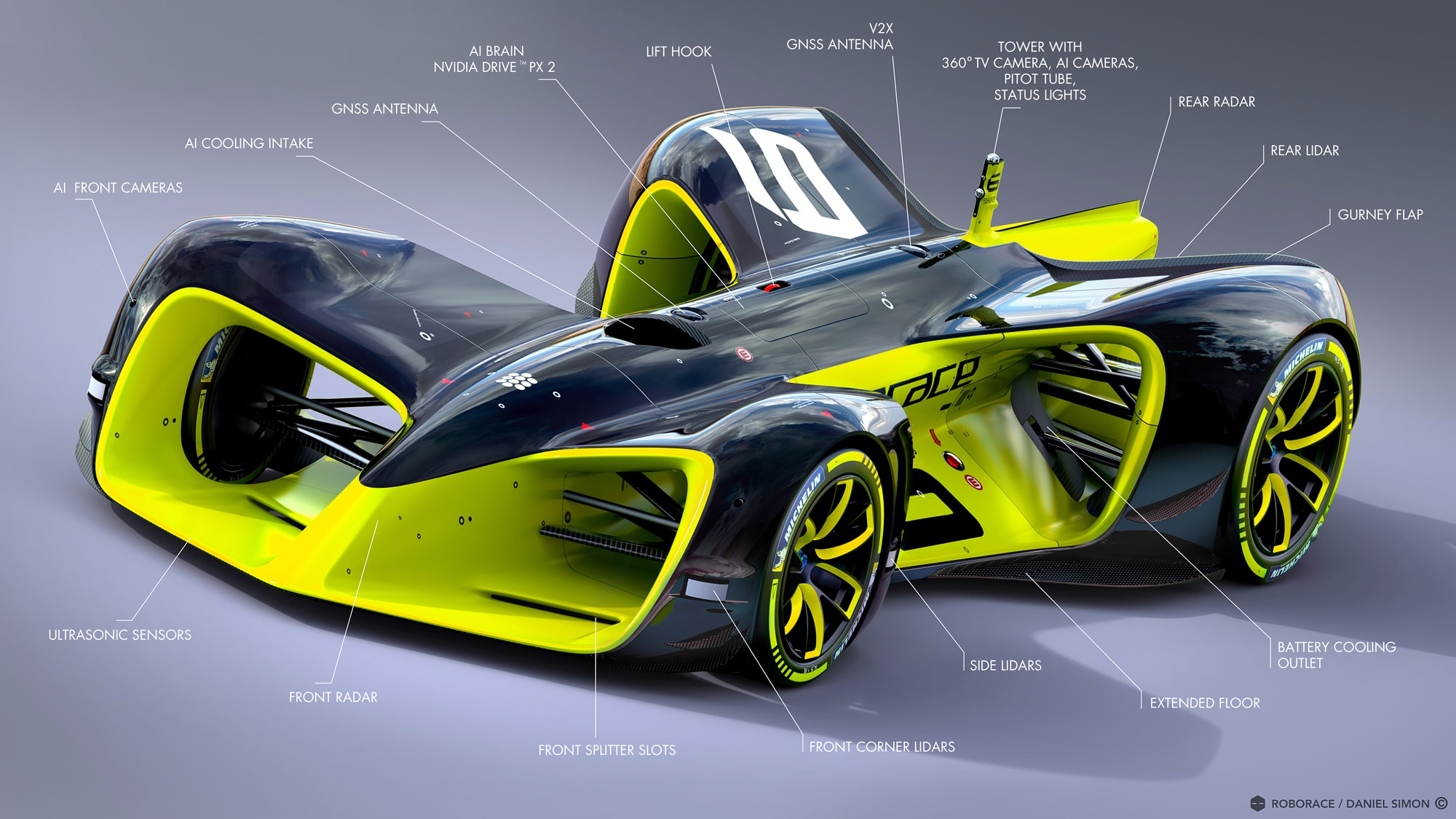Roborace. A race all about autonomous cars, no human drivers in the cockpit, racing each other on a conventional road racing circuit. To the motorsport purists, the idea sounds outrageous, even sacrilegious. But according to the chief designer of the Robocar, the moniker given to the cars which will be racing in this groundbreaking series, the idea is nothing short of revolutionary: this is the future not only of motorsport but of the automotive industry as a whole.
The idea for Roborace, or of a driverless racing car series, was first announced towards the end of 2015 by Formula E, FIA’s all-electric racing series. The project, a joint venture by Formula E and Kinetik, has progressed apace since. In the final week of February 2017, Roborace finally revealed the production model of their autonomous race car. However, there is as yet no firm indicator as to when the actual racing will start.
Development of the series’ first development car, named the DevBot, started in early 2016. It made its first outing in UK’s Donington Park racing circuit later in the summer. This development car was essentially equivalent to the proposed Robocar consisting of the same rechargeable battery specification, motor and control electronics. However, the company opted to use an LMP3 Ginetta chassis. To provide for better cooling of the nascent components, the DevBot was run without an engine cover. The DevBot had another demo outing in the streets of Hong Kong but a persistent battery issue forced the team to abandon the run. A few weeks later, however, the DevBot showed impressive performance and reliability when it drove for twelve laps around the Moulay El Hassan Formula E circuit in Marrakesh, Morocco.
In February 2017, during Formula E’s 2017 Buenos Aires ePrix, the first couple of Robocar prototypes took to the street circuit for a demo race. While one of the prototypes crashed into a corner, the other one impressed everyone when it successfully avoided running into a dog which had wandered onto the track. As a mark of progress, the cars’ Nvidia-powered AI engine handled over 20 autonomous laps on the Buenos Aires track across the weekend.
By now the DevBot development concept car has achieved top speeds of 115 miles per hour. This is remarkable considering that the car has only taken to the track twice this far. For comparison, Formula E cars (now in their third season of competitive racing), can only race at around 150 miles per hour when driven flat out. Kinetik has announced that they are confident the cars will be achieving top speeds of 170 mph when they take to the track for competitive racing later this year. – Find more about the autonomization of our planet here.



COMMENTS